Antigen Receptors: structure and function
1/37
There's no tags or description
Looks like no tags are added yet.
Name | Mastery | Learn | Test | Matching | Spaced |
|---|
No study sessions yet.
38 Terms
what are the immune recognition targets in innate vs adaptive immunity?
innate: microbial defense (PAMP) self, stress-associated (DAMP)
adaptive: self or foreign, autoimmunity, transplant rejection
What are the immune recognition receptors in innate vs adaptive immunity?
innate: pattern recognition receptor (PRRs)
adaptive: antigen receptor
what's the difference in immune recognition genetics between innate and adaptive immunity?
innate: genetically fixed
adaptive: somatically rearranged
what are the cells involved in adaptive immunity?
T cells and B cells
What is the primary location for T cells and B cells?
T cells : thymus
B cells : Bone marrow
what are the secondary locations you can find T cells and B cells?
Lymph nodes and spleen
what is the clonal selection theory?
explains how the adaptive immune system responds to specific antigens by having lymphocytes with pre-existing, antigen-specific receptors undergo clonal expansion upon binding to an antigen
how does the clonal selection theory occur? (long card)
1.) single progenitor cell gives rise to a randomly generated, enormous number of lymphocytes, each with diff. specificity
2.) self reactive immature lymphocytes are removed in thymus or bone
3.) a foreign antigen selects the mature lymphocyte to be activated in spleen, lymph node, or peyers patch
4.) selected cell divides and differentiates, creating a clone of effector cells (some become memory cells)
during which phase of an immune response does clonal selection occur?
the lag phase
what are the two types of Antigen receptors?
BCR or TCR
describe the BCR vs the TCR?
BCR: "free" antigen, soluble or cell associated, any type of biological molecule (antibody)
TCR: processed antigen, protein
describe the general structure of antigen receptors
composed of 2 heavy chains and 2 light chains with a constant and variable region
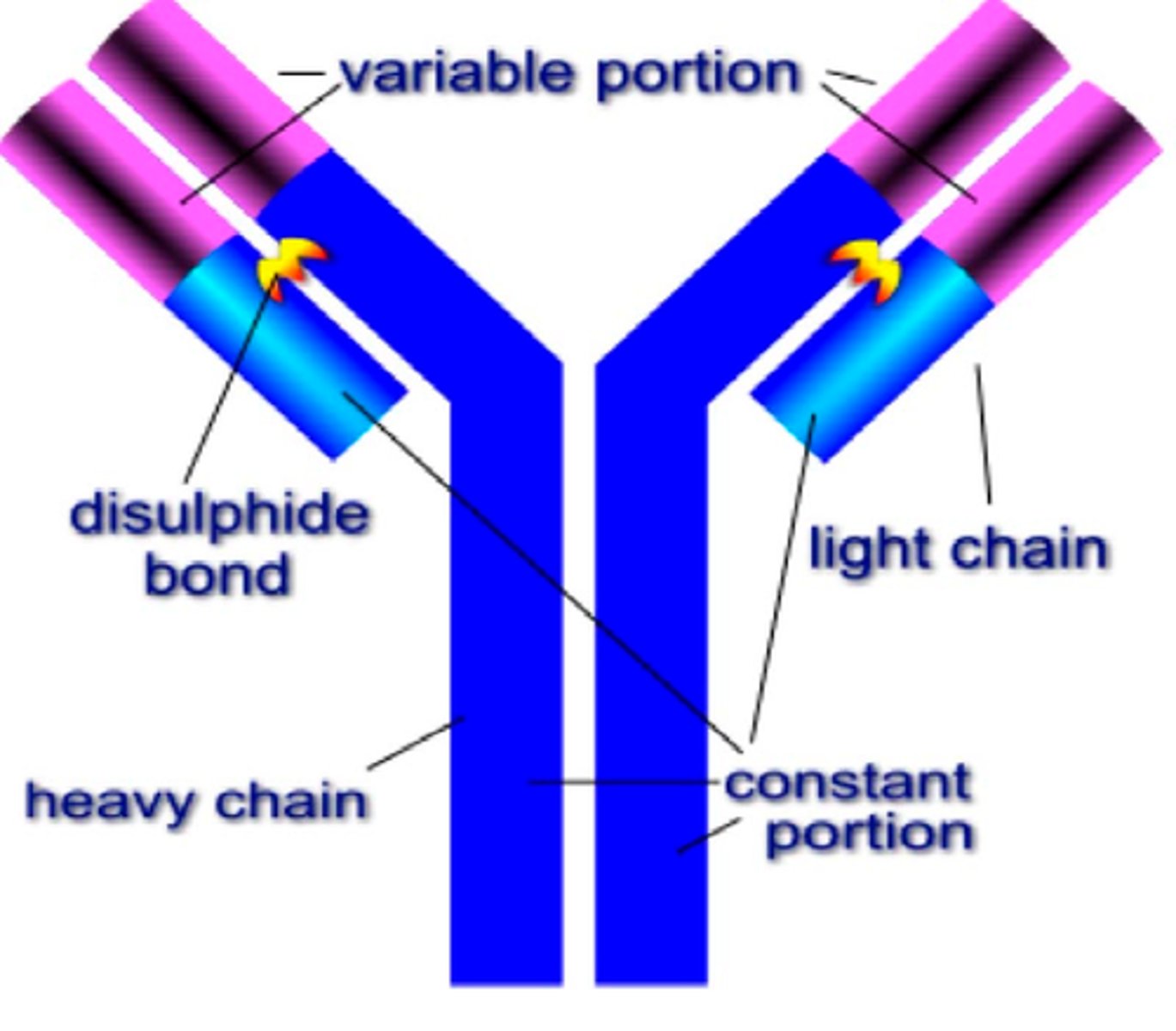
what is important about IgGs?
it was the first antibody discovered and it represents 80% of antibodies in the blood
where is the diversity found in Ig molecules?
the variable regions (where the antigens bind)
how does papain cleave an Ig?
cleaves both Fabs from each other and the Fc
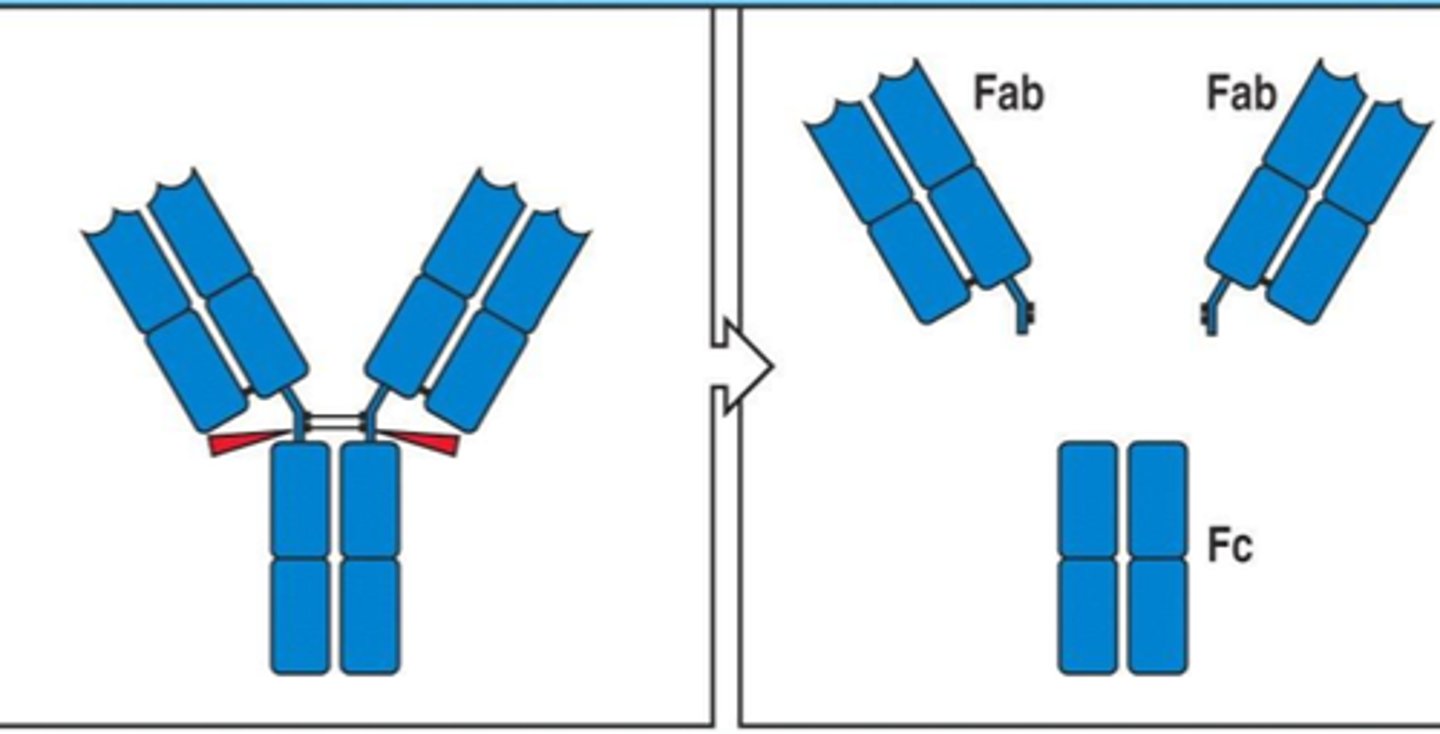
how does pepsin cleave an Ig?
cleaves Fabs from Fc
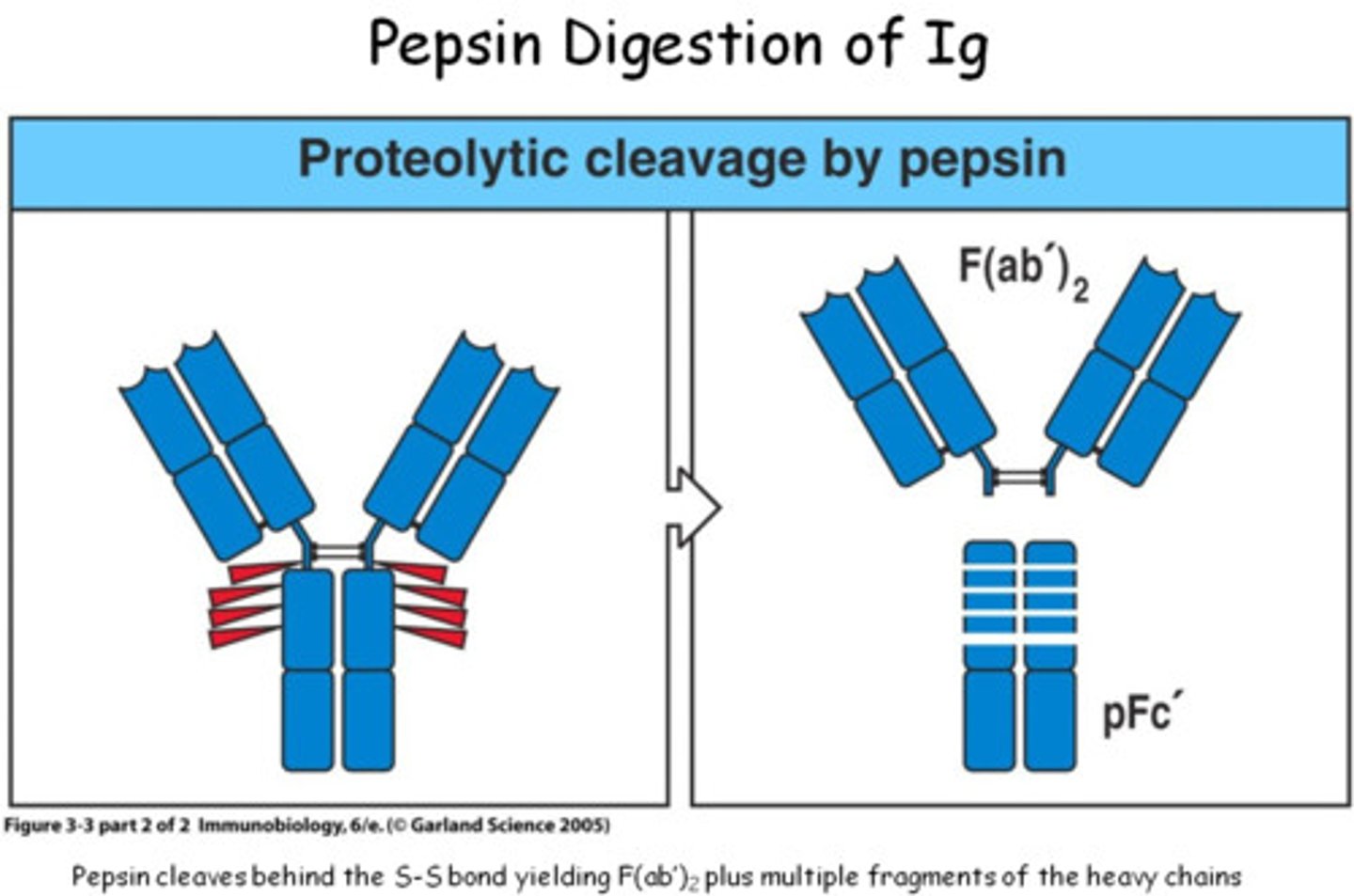
what is affinity in antibody-antigen binding?
Affinity is the equilibrium binding constant (KD ) for a single antigen binding site binding to a single epitope (high affinity = more likely to bind)
what is avidity in antibody-antigen binding?
Avidity is the energetic gain of having a multivalent antigen bind to a multivalent antibody
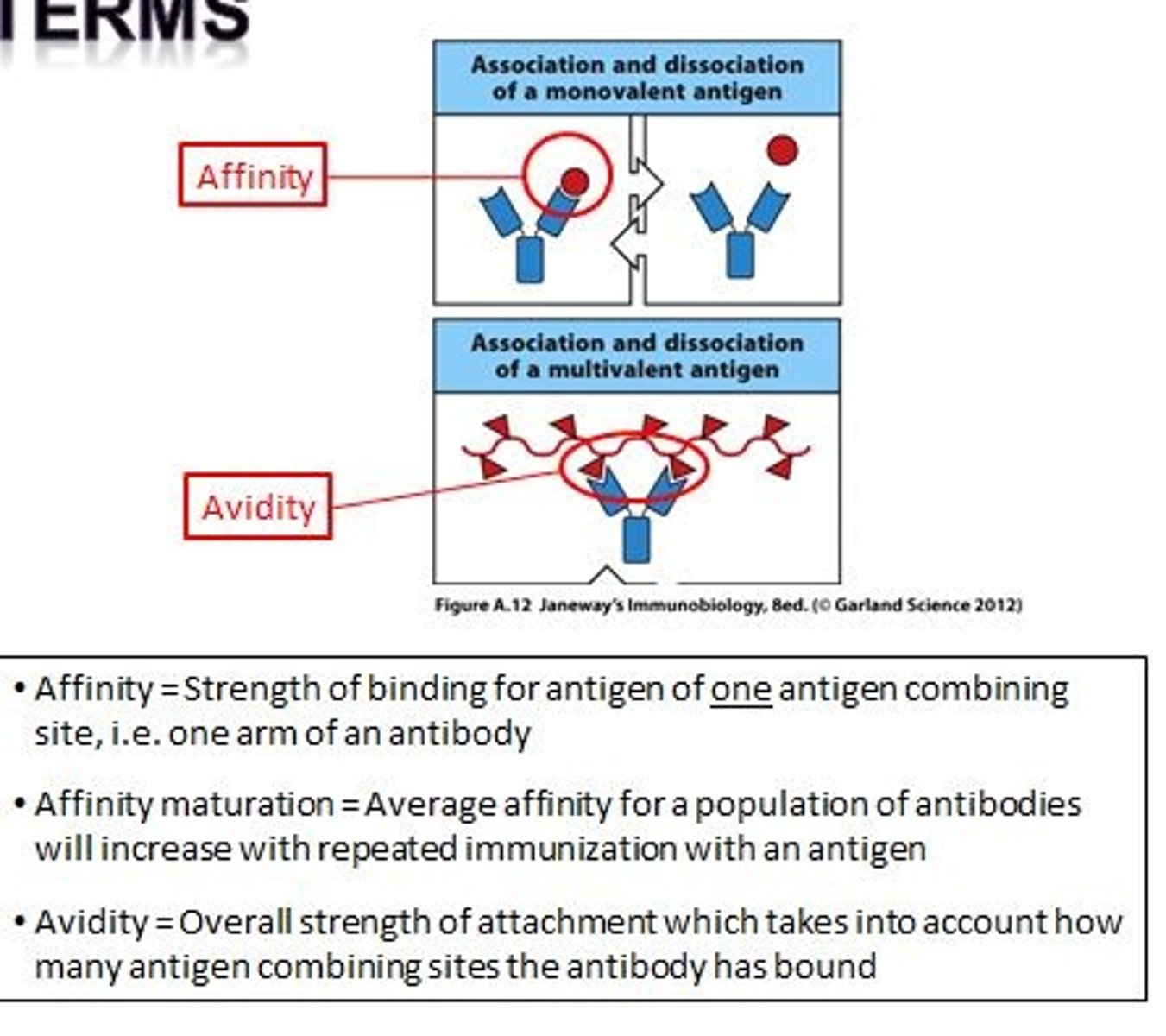
what do the hinge regions and quaternary structure of IgG antibodies help with?
opens the way to high avidity interactions with multivalent antigens
what is the CDR (complementarity determining regions)?
areas at the tips of the variable regions of antibodies that confer the specificity in antigen binding.
what are the 3 kinds of epitopes?
protein, carbohydrate, small chemical
what are haptens?
Haptens are very small molecules that are antigenic (can be antigens), but are not immunogenic on their own
epitope mapping is important for ______________ ______________
vaccine design
what are the 5 Immunoglobulin isotypes?
IgM, IgD, IgG, IgE, IgA
what are the effector functions of IgM?
neutralization, complement activation, mucosal transport
what are the effector functions of IgG
Neutralization, opsonization, complement activation, placental transport
what are the effector function of IgE
IgE-mediated reactions, defense against helminths, mast cell degranulation
what are the effector functions of IgA
Neutralization, Mucosal transport/immunity
what does the J chain help with?
polymerization of IgM and IgA
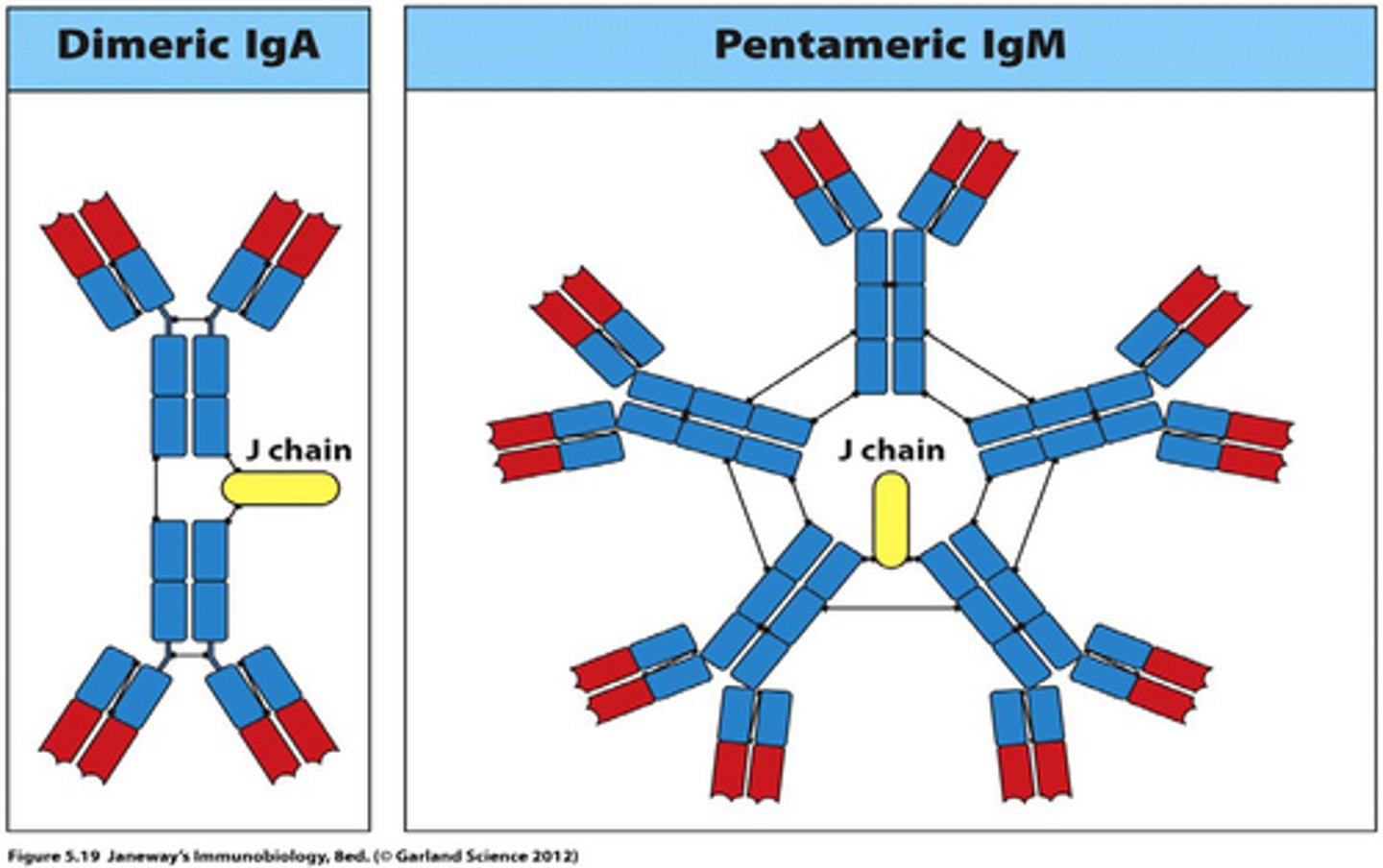
what is the difference between an Ig and a TCR?
an antibody can be on the cell surface or secreted to bind to soluble antigens, TCRs are never secreted from T cells and only bind peptides that are bound to MHC molecules
what are some similarities between an Ig and a TCR?
they have variable regions, constant regions, antigen-binding sites, and a transmembrane region (if Ig is cell bound and not secreted)
what do B cells recognize vs what do T cells recognize?
B cells recognize conformational determinants of antigens, T cells recognize peptides in the groove of MHC molecules
what are the phenotype markers for Helper T lymphocytes?
CD3+, CD4+
what are the phenotype markers for cytolytic T lymphocytes?
CD3+, CD8+
what are the phenotype markers for B lymphocytes?
Fc receptors Class II MHC, CD19, CD21, CD28
what are the phenotype markers for NK cells?
CD16
the Fab region is...
variable
The Fc region is...
constant